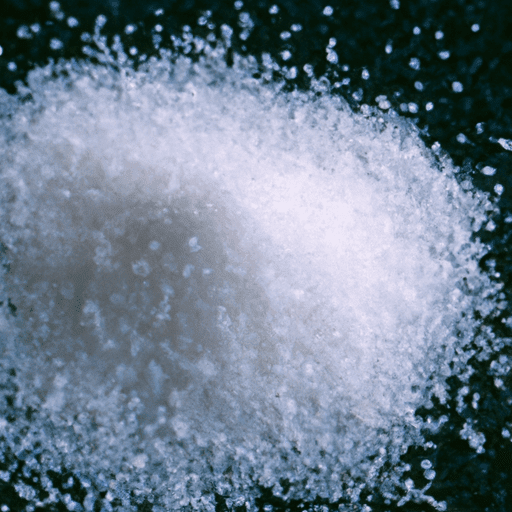Cane Sugar: Exploring the Sweetness of Nature
Have you ever wondered where that irresistible sweetness in your favorite desserts comes from? Look no further than cane sugar, the golden crystals derived from sugarcane plants. With its distinct flavor, versatility, and fascinating history, cane sugar has earned its place as a beloved ingredient in the culinary world. Join us as we delve into the delicious world of cane sugar and discover why it’s a staple in kitchens around the globe.
Taste That Delights the Senses
Cane sugar is celebrated for its unparalleled ability to enhance flavors in diverse recipes. Its taste is both sweet and slightly caramel-like, adding depth and richness to dishes. The complex flavor profile of cane sugar enhances baked goods, sauces, glazes, and beverages, creating a symphony of indulgence. Whether it’s a flaky pie crust, a velvety custard, or a refreshing summer beverage, cane sugar provides the perfect balance of sweetness to tantalize your taste buds.
Versatility in the Kitchen
Cane sugar’s versatility extends far beyond basic sweetness. Its unique properties make it a valuable tool for achieving a range of textures and culinary creations. From light and fluffy cakes to perfectly caramelized sauces, cane sugar lends its magical touch to a plethora of culinary delights.
In baking, cane sugar adds moisture, tenderness, and a golden hue to your creations. It helps cookies achieve that coveted chewiness, allows breads to rise to new heights, and helps cakes develop a delicate crumb. Additionally, cane sugar acts as a natural preservative, extending the shelf life of homemade jams, jellies, and preserves.
Outside of baking, cane sugar is a star player in countless recipes. It is a key ingredient in caramel and toffee, imparting an irresistible depth of flavor. Cane sugar also balances the acidity of tomato-based sauces and dressings, savors stir-fries and glazes, and elevates the taste of beverages, from soothing hot cocoa to refreshing iced tea. The possibilities are endless when you open your pantry to this versatile ingredient.
Nutritional Value and Health Considerations
While cane sugar is primarily known for its ability to sweeten dishes, it is important to be mindful of its nutritional value and consume it in moderation. Cane sugar provides a quick burst of energy, thanks to its high carbohydrate content. However, it lacks significant amounts of vitamins, minerals, and fiber, making it a source of empty calories.
To reap the maximum benefits from cane sugar, opt for minimally processed varieties. Cane sugar typically undergoes less refining than white sugar, retaining some minerals and natural molasses. Although these differences are minimal, they can contribute a slightly richer taste and a hint of color.
As with any sweetener, moderation is key. Enjoy cane sugar as part of a balanced diet and savor the occasional sweet treat without guilt. Explore ways to incorporate naturally sweet ingredients, such as fruits or honey, into your cooking to reduce your overall reliance on added sugars.
A Sweet Legacy: History and Fun Facts
The journey of cane sugar is as captivating as its taste. Sugarcane, the tropical grass from which cane sugar originates, has been cultivated for centuries. Its cultivation dates back to ancient civilizations in Asia, and it gradually spread across the world, impacting trade, economies, and even historical events. The production of cane sugar played a pivotal role in shaping the Caribbean, Latin America, and parts of the United States.
Did you know that Brazil is currently the largest producer of sugarcane and cane sugar? India, China, Thailand, and Pakistan also contribute substantially to global production. Cane sugar’s rich history and cultural significance continue to influence culinary traditions and economies worldwide, making it an ingredient deeply rooted in our shared global heritage.
In conclusion, cane sugar presents a world of sweetness, taste, and historical significance. From its unique flavor profile and versatility in the kitchen to its rich history and cultural impact, cane sugar has earned its sweet spot in the hearts of cooks and food enthusiasts alike. So, let the golden crystals inspire your culinary adventures, as you unlock the sweetness of nature with every delectable creation.
Origin:
Cane sugar, also known as saccharum officinarum, is a type of sugar that comes from the sugarcane plant. The sugarcane plant is a tall perennial grass native to tropical regions, including Southeast Asia and New Guinea.
Common Uses:
Cane sugar is one of the most widely used sweeteners globally. It is commonly used in baking, cooking, and as a sweetener in beverages and desserts. It is a key ingredient in many household items, such as cakes, cookies, pastries, candies, and sauces. Cane sugar is also used extensively in the production of soft drinks and other beverages.
Nutritional Benefits:
Cane sugar provides a source of carbohydrate, which is the body’s main source of energy. However, it is important to note that cane sugar is high in calories and is considered a high-glycemic food, meaning it can cause a rapid rise in blood sugar levels. It contains no significant amount of vitamins or minerals and provides empty calories.
Unique Properties and Historical Significance:
Cane sugar has some unique properties. When heated, it can caramelize, creating a browning effect and adding flavor to various dishes. Cane sugar is also hygroscopic, which means it can absorb and retain moisture, making it useful in baking to add moisture and tenderness to baked goods.
Historically, cane sugar has played a significant role in global trade and colonization. Its cultivation spread from Southeast Asia to various parts of the world, including Europe and the Americas, leading to the establishment of sugar plantations and the Transatlantic slave trade. The demand for cane sugar in Europe during the colonial era had a major impact on the economies and societies of many regions.




Use the share button below if you liked it.
It makes me smile, when I see it.